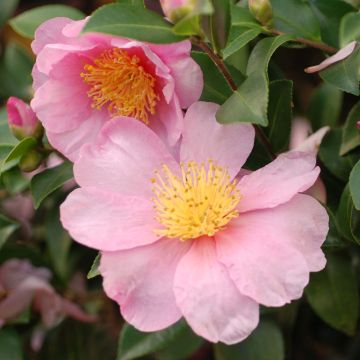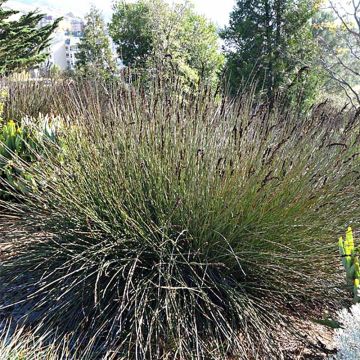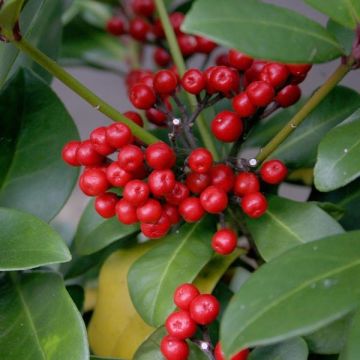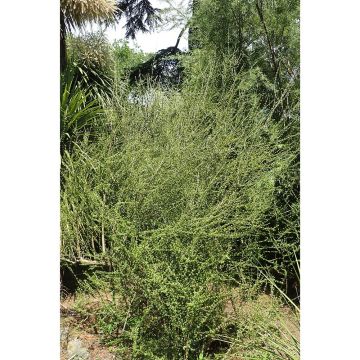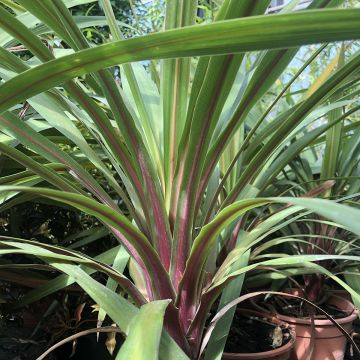Shipping country and language
Your country of residence may be:
Your country of residence is:
For a better user experience on our website, you can select:
Your shipping country:
Andorra
Austria
Belgium
Bulgaria
Canada
Chile
Croatia
Cyprus
Czechia
Denmark
Estonia
Finland
France
Germany
Greece
Hungary
Iceland
Ireland
Italy
Latvia
Lithuania
Luxembourg
Malta
Monaco
Netherlands
Poland
Portugal
Romania
Slovakia
Slovenia
Spain
Sweden
Switzerland
United Kingdom
We only deliver seed and bulb products to your country. If you add other products to your basket, they cannot be shipped.
Language:
French
German
Spanish
English
My Account
Hello
My wish lists
Plantfit
Log in / Register
Existing customer?
New customer?
Create an account to track your orders, access our customer service and, if you wish, make the most of our upcoming offers.


Rhododendron INKARHO Furnivalls Daughter
Rhododendron INKARHO Furnivalls Daughter
Rhododendron INKARHO® Furnivall's Daughter.
Rhododendron
Not received in great condition :'(. I planted it with special Rhododendron potting soil and a bit of bone meal. Fingers crossed.
Tof, 16/03/2024
Order in the next for dispatch today!
Dispatch by letter from €3.90.
Delivery charge from €5.90 Oversize package delivery charge from €6.90.
More information
This item is not available in your country.
Schedule delivery date,
and select date in basket
This plant carries a 24 months recovery warranty
More information
We guarantee the quality of our plants for a full growing cycle, and will replace at our expense any plant that fails to recover under normal climatic and planting conditions.
From €5.90 for pickup delivery and €6.90 for home delivery
Express home delivery from €8.90.



Does this plant fit my garden?
Set up your Plantfit profile →
Description
Rhododendron 'Furnivall's Daughter' is an old English variety, still highly appreciated for its spring flowering, as spectacular as it is brilliant, with large conical inflorescences in a soft pink shade strongly marked with cherry red. This wonderful bush, with a compact habit as wide as it is tall, is now available grafted on Inkarho®, which allows it to be grown in a wide range of acidic to slightly calcareous soils, including clay or loamy soils. Whether in the ground or in a pot, rhododendrons from the Inkarho range are cultivated like hydrangeas, in partial shade, in deep, loose and fresh soil.
Rhododendrons encompass over 800 species of the Ericaceae family, cultivated for the beauty of their massive flowering. The history of Inkarho Rhododendrons, somewhat revolutionary plants recently presented at the Chelsea Flower Show, began in Germany over 20 years ago. The discovery of a rhododendron naturally growing in a chalk quarry made it possible to graft different varieties onto its extraordinary root system. The shrubs obtained by this method tolerate a wide range of soils with a pH ranging from 4.5 to 7.5, as long as they are loose, fertile, moist and not excessively calcareous. In summary, a soil that is suitable for hydrangeas.
Originally obtained in 1958 in England, 'Furnivall's Daughter ' was awarded an A.G.M by the Royal Horticultural Society for its ornamental qualities. This variety belongs to the category of cold-resistant hybrid rhododendrons with large flowers (at least down to -15° C (5° F)). It forms a handsome, densely branched shrub with a rounded habit. As wide as it is tall, it will reach an average size of 1.5 m (4.9 ft) in all directions at maturity. Its growth is rather slow, so its dimensions at the age of 10 years are around 1.1 m (3.6 ft) in all directions. Its large evergreen leaves are a very fresh green with a glossy finish and are oval-lanceolate in shape, measuring up to 15 cm (5.9 in) in length. Flowering generally takes place from mid-May to mid-June. Grouped in corymbs, the beautiful funnel-shaped flowers are bright pink in bud, opening to light candy pink or pale pink with a throat spotted with strawberry pink and intensely streaked with cherry red.
Rhododendron 'Furnivall's Daughter' is relatively tolerant regarding exposure. Plant it in the morning sun or in partial shade. If possible, plant in the East where it will benefit from the morning sun while being protected from excessive heat. Its good shade tolerance also allows it to be used to brighten up the north facade of the house. In the garden or in pots, with its charmingly pink flowering, it will easily dress up a shaded space. Less demanding in terms of soil than usual rhododendrons, it can be more classically associated with numerous other flowering shrubs, not necessarily acidophilous: hydrangeas, mock oranges, Japanese quince, buddleias, abelias, shrub roses or autumn camellias. Japanese Anemones will also make good companions, as well as silver candles and foxgloves, in woodland areas. It is often forgotten that Rhododendrons can be used to create truly remarkable hedges, on property boundaries or along wide paths in a large garden.
Rhododendron INKARHO Furnivalls Daughter in pictures




Plant habit
Flowering
Foliage
Botanical data
Rhododendron
INKARHO® Furnivall's Daughter.
Ericaceae
Rhododendron
Cultivar or hybrid
Planting and care
Plant in a semi-shade exposure, protected from cold and drying winds. Choose moist, loose, fertile soil. It can be slightly calcareous, neutral or acidic; a soil that will suit a hydrangea. If necessary, incorporate a good amount of leaf compost and ericaceous soil into your garden soil. Dig a hole three times larger than the pot. Soak the root ball in water and plant the bush at the collar level, in a nourishing mixture composed of leaf compost, gravel or pumice stone, and loam or topsoil, as Inkarho Rhododendrons are hungry plants. Water generously and keep the soil moist in summer. Azaleas and Rhododendrons have a relatively shallow root system. Therefore, they are sensitive to long periods of drought. This is why a humus-enriched soil and abundant watering during dry periods are recommended. Apply a mulch of wood chips or organic matter at the base of the bush every spring to maintain soil moisture while keeping a slightly acidic pH. Maintenance consists of cutting off faded flowers after flowering and removing dead branches.
Azaleas and Rhododendrons can sometimes be attacked by weevils, which eat the edges of the leaves and the rootlets, as well as the infamous "Rhododendron beetle," which rarely causes severe damage. There are effective natural solutions against weevils. Yellowing of the leaves (chlorosis) in Rhododendrons indicates poor assimilation of iron in the soil and can lead to premature plant death. While limestone is often the cause, poorly drained soil or deep planting of the root ball can also explain the phenomenon.
Planting period
Intended location
Care
- , onOrder confirmed
Reply from on Promesse de fleurs
Evergreen shrubs
Haven't found what you were looking for?
Hardiness is the lowest winter temperature a plant can endure without suffering serious damage or even dying. However, hardiness is affected by location (a sheltered area, such as a patio), protection (winter cover) and soil type (hardiness is improved by well-drained soil).

Photo Sharing Terms & Conditions
In order to encourage gardeners to interact and share their experiences, Promesse de fleurs offers various media enabling content to be uploaded onto its Site - in particular via the ‘Photo sharing’ module.
The User agrees to refrain from:
- Posting any content that is illegal, prejudicial, insulting, racist, inciteful to hatred, revisionist, contrary to public decency, that infringes on privacy or on the privacy rights of third parties, in particular the publicity rights of persons and goods, intellectual property rights, or the right to privacy.
- Submitting content on behalf of a third party;
- Impersonate the identity of a third party and/or publish any personal information about a third party;
In general, the User undertakes to refrain from any unethical behaviour.
All Content (in particular text, comments, files, images, photos, videos, creative works, etc.), which may be subject to property or intellectual property rights, image or other private rights, shall remain the property of the User, subject to the limited rights granted by the terms of the licence granted by Promesse de fleurs as stated below. Users are at liberty to publish or not to publish such Content on the Site, notably via the ‘Photo Sharing’ facility, and accept that this Content shall be made public and freely accessible, notably on the Internet.
Users further acknowledge, undertake to have ,and guarantee that they hold all necessary rights and permissions to publish such material on the Site, in particular with regard to the legislation in force pertaining to any privacy, property, intellectual property, image, or contractual rights, or rights of any other nature. By publishing such Content on the Site, Users acknowledge accepting full liability as publishers of the Content within the meaning of the law, and grant Promesse de fleurs, free of charge, an inclusive, worldwide licence for the said Content for the entire duration of its publication, including all reproduction, representation, up/downloading, displaying, performing, transmission, and storage rights.
Users also grant permission for their name to be linked to the Content and accept that this link may not always be made available.
By engaging in posting material, Users consent to their Content becoming automatically accessible on the Internet, in particular on other sites and/or blogs and/or web pages of the Promesse de fleurs site, including in particular social pages and the Promesse de fleurs catalogue.
Users may secure the removal of entrusted content free of charge by issuing a simple request via our contact form.
The flowering period indicated on our website applies to countries and regions located in USDA zone 8 (France, the United Kingdom, Ireland, the Netherlands, etc.)
It will vary according to where you live:
- In zones 9 to 10 (Italy, Spain, Greece, etc.), flowering will occur about 2 to 4 weeks earlier.
- In zones 6 to 7 (Germany, Poland, Slovenia, and lower mountainous regions), flowering will be delayed by 2 to 3 weeks.
- In zone 5 (Central Europe, Scandinavia), blooming will be delayed by 3 to 5 weeks.
In temperate climates, pruning of spring-flowering shrubs (forsythia, spireas, etc.) should be done just after flowering.
Pruning of summer-flowering shrubs (Indian Lilac, Perovskia, etc.) can be done in winter or spring.
In cold regions as well as with frost-sensitive plants, avoid pruning too early when severe frosts may still occur.
The planting period indicated on our website applies to countries and regions located in USDA zone 8 (France, United Kingdom, Ireland, Netherlands).
It will vary according to where you live:
- In Mediterranean zones (Marseille, Madrid, Milan, etc.), autumn and winter are the best planting periods.
- In continental zones (Strasbourg, Munich, Vienna, etc.), delay planting by 2 to 3 weeks in spring and bring it forward by 2 to 4 weeks in autumn.
- In mountainous regions (the Alps, Pyrenees, Carpathians, etc.), it is best to plant in late spring (May-June) or late summer (August-September).
The harvesting period indicated on our website applies to countries and regions in USDA zone 8 (France, England, Ireland, the Netherlands).
In colder areas (Scandinavia, Poland, Austria...) fruit and vegetable harvests are likely to be delayed by 3-4 weeks.
In warmer areas (Italy, Spain, Greece, etc.), harvesting will probably take place earlier, depending on weather conditions.
The sowing periods indicated on our website apply to countries and regions within USDA Zone 8 (France, UK, Ireland, Netherlands).
In colder areas (Scandinavia, Poland, Austria...), delay any outdoor sowing by 3-4 weeks, or sow under glass.
In warmer climes (Italy, Spain, Greece, etc.), bring outdoor sowing forward by a few weeks.
